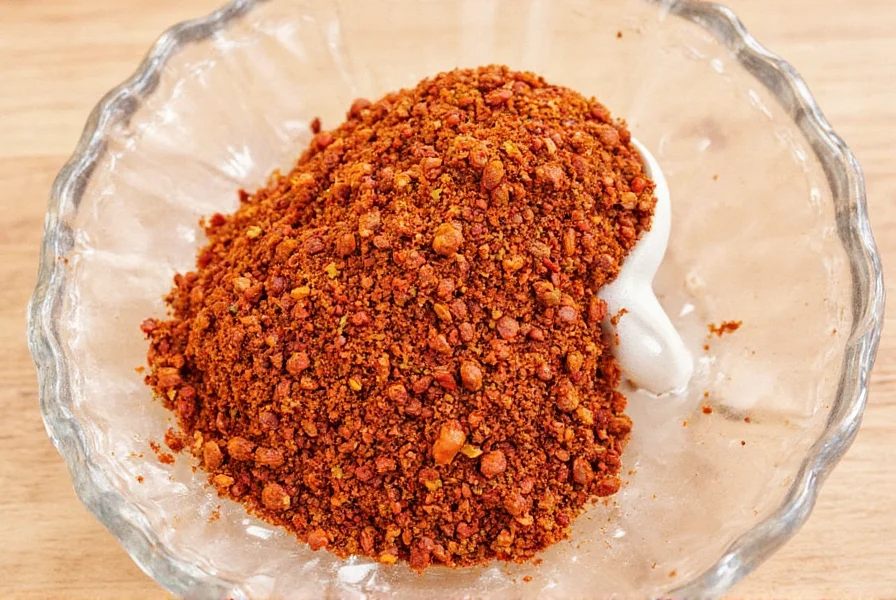Spicy Delights: A Fun and Flavorful Guide to Thai Chili Pepper Flakes
Table of Contents
Introduction to Thai Chili Pepper Flakes
If you're a spice enthusiast or someone who loves to add a kick to their meals, then you've probably heard of Thai chili pepper flakes. These tiny, fiery bits of flavor are the unsung heroes of many Asian dishes. But what exactly are they, and why should you care? Let's dive into the spicy world of Thai chili pepper flakes.
Thai chili pepper flakes, also known as nam phrik khai, are made from dried and crushed bird’s eye chilies. They are a staple in Thai cuisine, used to bring heat and depth to soups, curries, salads, and even dips. The name might be misleading—these aren't just any chili flakes; they’re packed with flavor and intensity that can elevate your cooking game in a big way.
Why You Should Love Thai Chili Pepper Flakes
There are so many reasons to love Thai chili pepper flakes, whether you're a seasoned chef or just starting out in the kitchen. Here are a few compelling ones:
- They’re versatile: From sizzling stir-fries to tangy sauces, these flakes can be used in almost any dish that needs a little heat.
- They’re easy to use: No need to chop or dice—just sprinkle them in and watch the magic happen.
- They’re full of flavor: Beyond the heat, they add a smoky, slightly sweet taste that complements many ingredients.
- They’re great for customization: You can adjust the amount based on your spice tolerance, making it perfect for sharing with friends and family.
Practical Tips for Using Thai Chili Pepper Flakes
Now that you know what Thai chili pepper flakes are, here are some practical tips to help you make the most of them:
- Start small: If you're new to the heat, start with a pinch and build up. You can always add more, but you can’t take it away once it’s in the dish.
- Pair with acidic elements: Lime juice, vinegar, or citrus zest can balance the heat and enhance the overall flavor.
- Use in dressings and marinades: Mix them into vinaigrettes, marinades, or dipping sauces for an extra punch of flavor.
- Store properly: Keep them in an airtight container in a cool, dark place to preserve their potency and flavor.
- Experiment with combinations: Try mixing them with garlic, ginger, or soy sauce for a unique twist on classic recipes.
Cooking with Thai Chili Pepper Flakes
Thai chili pepper flakes are incredibly useful in the kitchen. Whether you're making a traditional Thai dish or experimenting with something new, here are some ideas:
- Pad Thai: Sprinkle them over the noodles for a fiery finish.
- Tom Yum Soup: Add a teaspoon to the broth for a spicy kick.
- Thai Green Curry: Use them in place of fresh chilies for convenience.
- Cheese board: Mix them into dips or spreads for a spicy addition to your charcuterie.
- Stir-fry: Toss them into your favorite stir-fry recipe for a quick and easy heat boost.
Buying Guide: How to Choose the Best Thai Chili Pepper Flakes
With so many options available, it can be overwhelming to choose the right Thai chili pepper flakes. Here's a guide to help you make an informed decision:
| Feature | What to Look For |
|---|---|
| Origin | Look for products from Thailand or other authentic regions where bird’s eye chilies are grown. |
| Heat Level | Check the Scoville rating if possible. Thai chili flakes typically range from 50,000 to 100,000 SHU. |
| Quality | Choose flakes that are uniformly sized and have a rich red color. Avoid those that look dull or have a strong chemical smell. |
| Brand Reputation | Opt for well-known brands or local specialty stores with good reviews. |
| Packaging | Ensure the packaging is airtight and resealable to maintain freshness. |

When choosing Thai chili pepper flakes, think about how you plan to use them. If you're making spicy dishes regularly, go for a larger bag. If you're just starting out, a smaller package might be better to test different varieties.
Recommended Products
- Thai Spices Co. Bird’s Eye Chili Flakes
- Features: Organic, high-quality flakes with a balanced heat level.
- Best For: Everyday cooking, especially for Thai-inspired dishes.
- Use Cases: Stir-fries, curries, and dipping sauces.
- Occasions: Family dinners, potlucks, and casual gatherings.
- Bangkok Spice Market Dried Chili Flakes
- Features: Smoked and crushed for added depth of flavor.
- Best For: Those who enjoy a smoky note in their dishes.
- Use Cases: Soups, stews, and grilled meats.
- Occasions: BBQs and holiday feasts.
- Green Valley Farms Thai Chili Flakes
- Features: Freshly ground and free from additives.
- Best For: Health-conscious cooks and home chefs.
- Use Cases: Salads, dressings, and snack mixes.
- Occasions: Lunches, snacks, and light meals.
Conclusion
In conclusion, Thai chili pepper flakes are a must-have in any spice rack. Their versatility, flavor, and ease of use make them a favorite among both amateurs and professionals. Whether you're looking to add some heat to your next meal or experiment with new flavors, these tiny flakes have a big impact.
So, next time you're shopping for spices, don't forget to grab a bag of Thai chili pepper flakes—they might just become your new kitchen essential.










 浙公网安备
33010002000092号
浙公网安备
33010002000092号 浙B2-20120091-4
浙B2-20120091-4